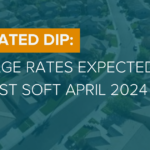Time is a fix and flip investor’s worst enemy. The faster an investor can get from deal discovery to sale, the more profitable their business will be.
Time hurts your bottom line thanks to:
- Loan interest payments
- Property taxes
- Utility costs
- Market fluctuations
The longer you hang on to the property, due to either a lengthy renovation schedule or extended time on market, the more you’ll pay in interest, taxes, and utilities. Additionally, the project becomes riskier as more time passes between purchase and sale. Not only is there a greater risk of property damage (due to natural and/or criminal activity), but there is also a greater risk of market fluctuations which could hurt your ultimate sale price.
Read on to learn how you can maximize profits by minimizing your flip time.
How to Shorten Your Fix and Flip Timeline
Build a fix and flip team
A successful fix and flip is a coordinated effort by a number of individuals and organizations; to pull off a flip, most investors work with a contractor, lender, an attorney, and a real estate agent – at a minimum. Having a go-to fix and flip team will accelerate your flipping process.
Not only will a team eliminate the time taken up by researching, meeting, and screening potential service providers, but the entire process will be smoother as you and your team get to know each other’s work processes and expectations over time.
Choose cosmetic rehabs
Variances are the kiss of death for quick flips. Even for experienced investors and contractors, it is nearly impossible to predict how long it will take to obtain a variance (if you can obtain one at all). Local politics are unpredictable, so before you buy an investment property, make sure you can complete all necessary renovations with minimal interference from the town.
Simple rehabs also reduce the likelihood of unexpected emergencies or drawn-out construction schedules – and let you actively monitor and assist in the renovations.
Optimize draw requests
No matter how efficient your lender is, there will be a few days’ lag between your request for a draw and the disbursement of funds.
Here’s the breakdown of what happens each time you request a draw:
- Day 1: Request Draw
- Day 2-3: Inspection of Property
- Day 4-5: Lender Wires Funds from Escrow
After the lender wires the funds, you should receive your cash within a business day. Barring any setbacks, the soonest you’ll realistically see funds after completing a draw is three days after you put in your request.
If you let your lender know when the work will be completed two or more days before you’re done, you can schedule an inspection as soon as the property is ready and shave one or two days off the lag time. However, you’ll still need to wait for the inspector to send the report to the lender and for the escrow agent to process the lender’s request to release funds.
The fewer draws you require for your rehab, the fewer construction delays you’ll experience (even if they’re minor). Plus, fewer draws means you’ll pay less in inspection and processing fees over the life of your project.
List before renovations are complete
In most cases, you don’t need to wait until your project is completely finished before listing the property for sale – especially if you prioritize the most visible spaces in your renovation schedule. By leaving the least visible spaces, such as a basement, attic, and closets for last, you can get your property on the market sooner. To show your property in the best light, you can virtually stage the kitchen, living room, master bed, and bathroom, then include those images as well as a floor plan with the listing.
Interested buyers can discover and schedule a viewing of your renovated home while you’re still putting on the finishing touches. This cuts out some of the lag time between finishing your rehab and getting buyers out to see what you’ve done, as well as gives your real estate agent tools to sell your house sooner.
What difference does a day make?
Let’s look at this sample deal:
- Purchase Price: $250,000
- Rehab: $80,000
- Loan Amount: $275,000
- Interest Rate: 10%
- Property Tax: 2%
- Monthly Utilities: $300
Assuming you paid the market value for your property, you’ll pay $36,100 in interest, taxes, and utilities after a year. For each day you shave off your fix and flip schedule, you’ll save $99. For each month, you’ll save over $3,000.
When fix and flip projects drag on, investors not only lose out on profits from their current flip, but they also miss out on other investment opportunities. The most effective investors finish their current project, sell, and use the proceeds to invest in their next flip without pause.
If you can reduce your average flip time from 6 months to 4 months, you can save thousands and do three full flips in a year (without running multiple concurrently). Even two weeks saved on each project will significantly improve an investor’s annual return, and the benefits will only accrue over time.
A fast flip starts with a fast lender – which is why ABL closes in ten days or less. For borrowers prepared with all the necessary documentation, ABL can close in less than a week. If you’re looking for funding for a real estate investment project, contact us at 201-942-9089 or fill out our pre-qualification form to start the loan process today.







0 Comments